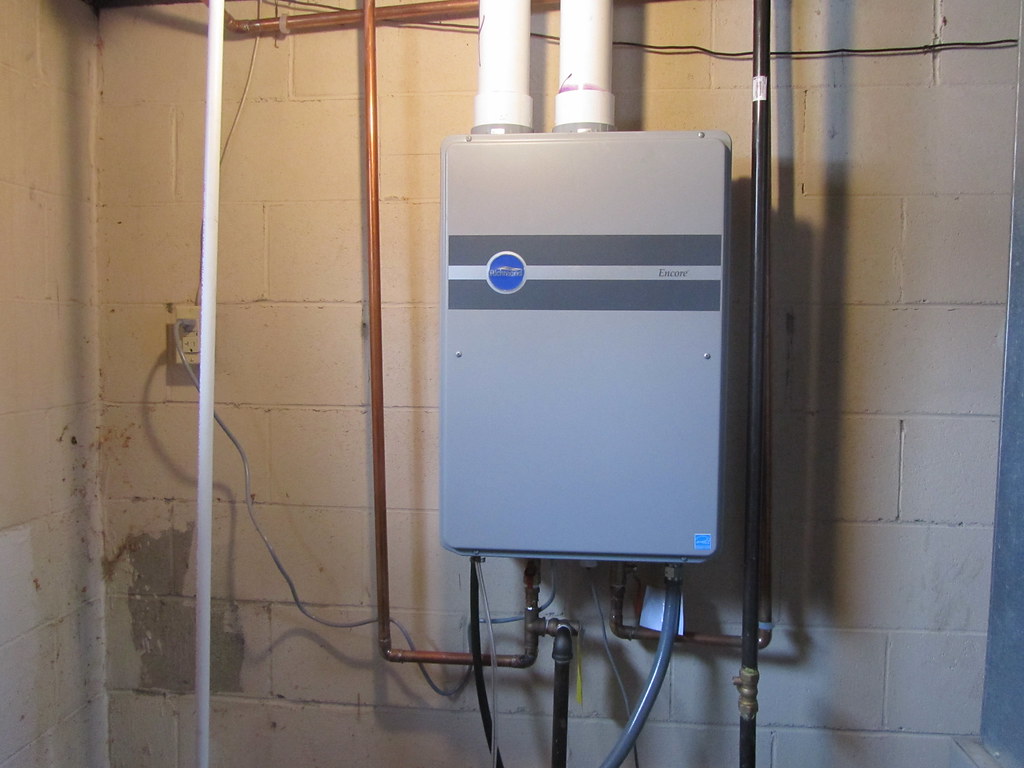An average American household uses a lot of energy every year to ensure the availability of hot water at all times. Large storage tanks with the capacity of holding around 40-50 gallons of water are kept and supplied with power all year long as a method to heat water is utterly wasteful because the process utilizes too much energy. You probably have waited for hot water because someone took a long shower, and you know how long the tank takes to reheat the water. If you’re tired of running out of hot water, you must know that there’s an energy-efficient way to ensure you have as much hot water whenever you need it. This guide is meant to enlighten you with the 6 things that you need to know about Tankless Water Heaters.

1. How Tankless Water Heaters work
The process of getting hot water on-demand starts when you turn on the tap. As soon as the water starts flowing into the tube, a flow sensor sends a signal to the tankless water heater’s control panel. The control panel turns on the fan to fill the air in the ignition chamber, signals the gas valve to release gas, and ignites the burner. A heat exchanger in the tankless water heater captures the heat from the resulting flames and transfers heat to the water flowing through the exchanger tube. In case, the temperature is too high or too low, the mixing valve, flow-regulating valve, and temperature sensor are responsible for regulating the temperature and flow of the hot water as per the desired setting.
2. Types of Tankless Water Heaters
If you go shopping for a tankless water heater, you’ll come across three variants. These compact heaters can operate on propane, natural gas, and electricity. Between propane and natural gas, the former is a cleaner and more efficient option and, thanks to people like Kelly Propane, super easy to come by. If your house has a powerful electrical system, you can get an electric tankless water heater, which will cost you much lower than its gas-based counterpart. However, if your house’s electrical system hasn’t been upgraded for a while, installing an electric water heater may prove to be more costly than the remaining options.
3. How Tankless Water Heaters are different from Tank-Style Water Heaters
Unlike tank-style water heaters, tankless heaters are compact and much more energy-efficient. These types of water heaters don’t need a storage tank to store hot water. When a cold stream of water enters the unit, the water is heated by an in-built heating element and hot water flows out of the other end. In simple terms, tankless water heaters deliver hot water only when you need it. The increasing popularity of tankless water heaters in American households can be attributed to the fact that these heaters deliver hot water on demand and aren’t limited by the size of the water storage tank. These qualities make tankless water heaters more desirable than tank-styled water heaters.
4. Installation Process
To have your tankless water heater installed, letting the professionals do the job is the best resolve since the installation requires a lot of analysis and preparation. For starters, tankless water heaters require a gas connection so you might need to upgrade your gas line. If you have an old water heater, it’ll have to be removed. While mounting the water heater, new water lines will have to be installed. To ensure safety, a pressure relief valve will have to be installed. Finally, you’ll have to install an exhaust vent for the venting.
5. Pros of Tankless Water Heaters
The things that make tankless water heaters so attractive include the compactness of the units, freedom from leaks and bacteria, safety from carbon-monoxide back-drafting into the house, and the ease of draining the water from the heater with the help of a compressor, before closing the house for winter. Apart from heating water on-demand, tankless water heaters are eco-friendly, compact, and can easily be mounted on walls.
6. Cons of Tankless Water Heaters
Tankless water heaters are surely in demand but these heaters have their own drawbacks too. With the initial cost and the installation charges combined, you can expect a tankless water heater to cost as much as the times the overall expense of getting a tank-style heater because these heaters require expensive venting materials. These tankless water heaters also require a lot of electricity and gas to operate which adds a significant amount to your expenditure over time.

But that’s not the only drawback either; the other one is costly repairs compared to the standard hot water tank repair prices. Unlike the more common tank-style heaters, which many homeowners and regular plumbers can handle, tankless models are a different story. They’re packed with sophisticated electronics and complex components that usually need someone with specific expertise to sort out.
So, this is exactly why repairs are pricey: a plumber can’t do it, but a technician needs to do it! So, if something goes wrong, be prepared for potentially higher repair bills and a bit of a wait—something to keep in mind if immediate hot water is something you can’t do without.
